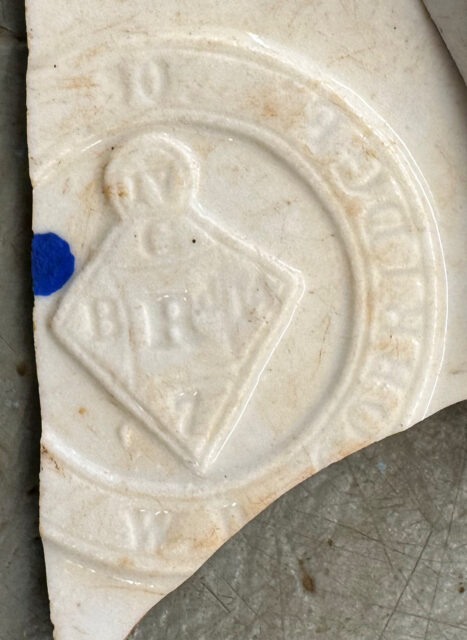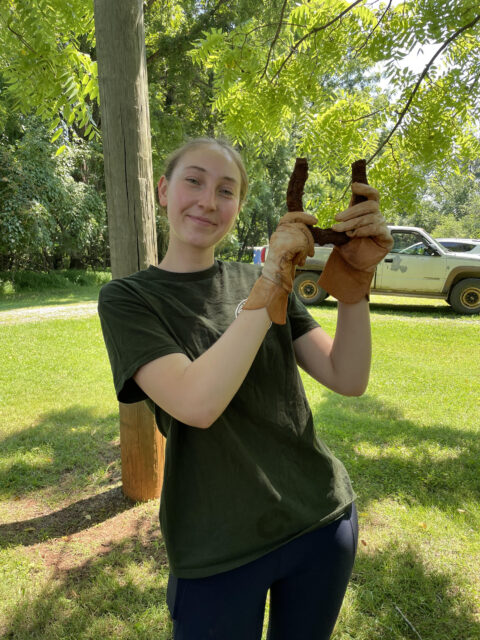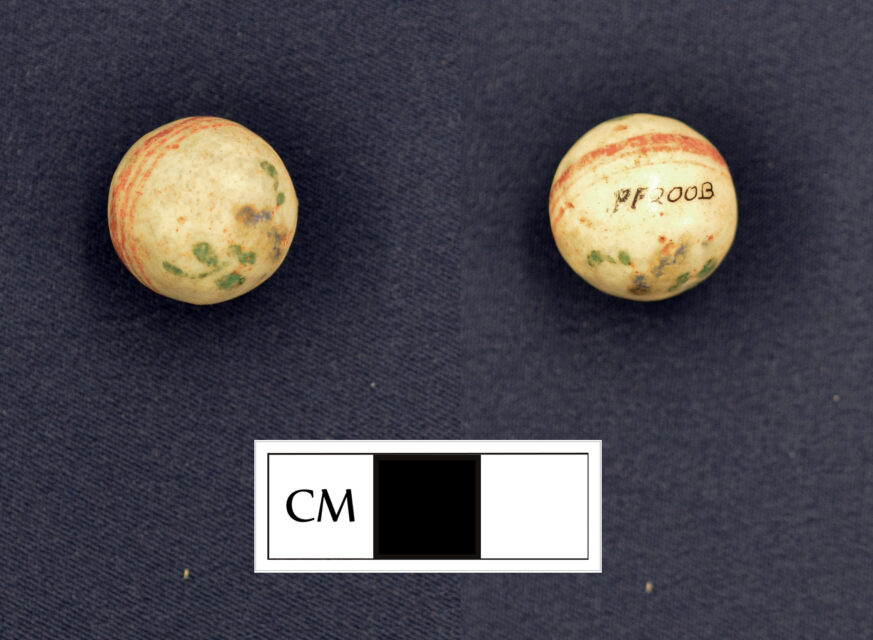Archaeology Blog
Student Research Illuminates Fascinating Finds
By: Erin Schwartz
On July 14, Poplar Forest’s 32nd Annual Summer Field School in Historical Archaeology drew to a close. While students had learned many valuable skills in the field and in the lab, they further developed their creative and analytical skills in individual student research projects. Each student could choose an artifact they found or found interesting – maybe a ceramic sherd, button, or marble – from their excavations and then analyze its history and context within the Poplar Forest landscape. Our students had a lot of fun investigating their selected artifacts, and their research opened several potential avenues for further inquiry at the 1857 Slave Dwelling.
Several students chose ceramics for their research projects. Nicole Finnigan (Catholic University) presented an in-depth analysis on one black transfer printed sherd recovered from a unit along the base of the building, assessing its decorative patterning and connections to ceramics from a nearby cabin where enslaved African Americans lived in the decades prior to the Civil War. Taylor Gantzert’s (University of South Florida) project focused on ceramic maker’s marks found on the backs of several plate sherds and compared production dates to different time periods of occupation related to the 1857 Slave Dwelling. Finally, Catherine Haines (University of Mary Washington) successfully matched our excavated sherd with a diamond-shaped maker’s mark to the “Argos”-patterned pitcher produced in 1863 at William Brownfield’s Cobridge Works in Stoke-on-Trent, England. In addition to ceramics, glass bottles were of interest, with Cameron Cash (UNC Chapel Hill) looking at the different types of wine and liquor bottles found at Poplar Forest over time.
Animals and animal-related artifacts also piqued the curiosity of a few of our students. Rose Hill (Southern Methodist University) used Bedford County tax records and Jefferson’s letters to hypothesize horse presence and activities around Poplar Forest (aided by the serendipitous find of not one, but two horseshoes the day before the conclusion of the field school). Birds and bird-related artifacts highlighted a presentation from Gill Batt (Randolph College), who analyzed bird bones from the Wing of Offices, the Quarter Site, and the 1857 Slave Dwelling’s root cellar to compare food cooking and consumption in these locations. Gill’s research also covered the many glass and ceramic “gullet stones” or “gastroliths,” the hard objects consumed by birds to aid digestion, left by chickens in the dwelling yard space.
Alyssa Moorman’s (University of Arizona) presentation surveyed the unique history and types of one of our favorite finds this summer, marbles. For instance, the ceramic marble with the blue, 3-bud sprig flowers and red wide band/narrow line motif (pictured below) was manufactured in Germany in the 1850-60s and would have been among the most expensive marbles available to residents of Central Virginia at that time. The glass marbles we found this summer were all machine-made, inexpensive, and likely from the early 20th century. While marbles can be difficult to date and research, they are very important artifacts that can help illuminate children’s important roles in shaping the pre- and post-Emancipation landscapes at Poplar Forest.
We learned so much alongside and from our field school students this summer, and we look forward to building on their work in the months to come.


